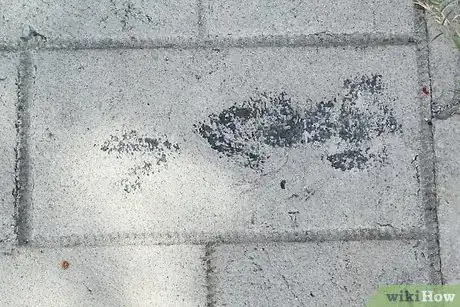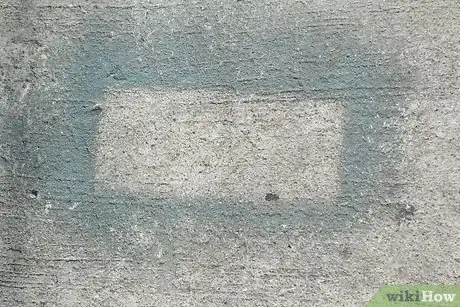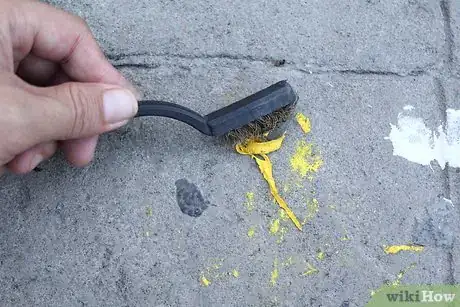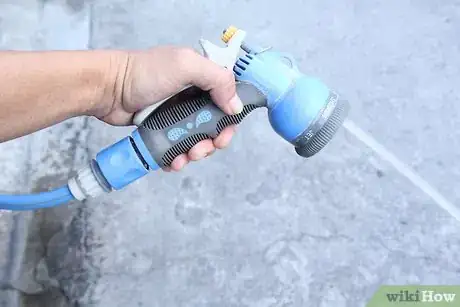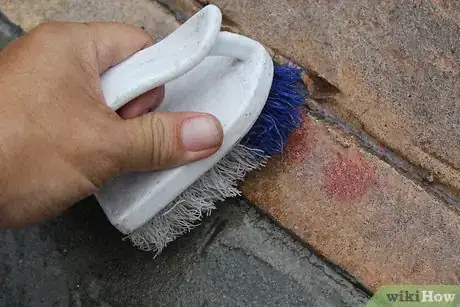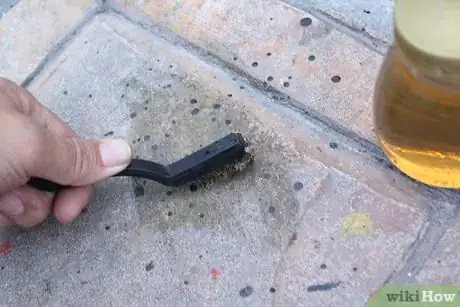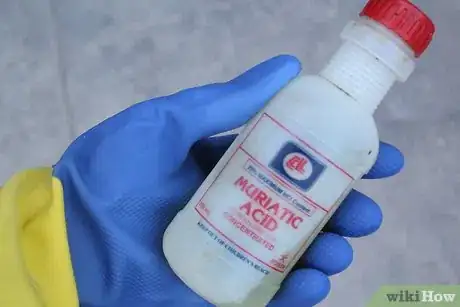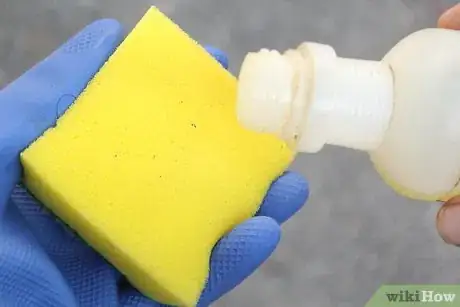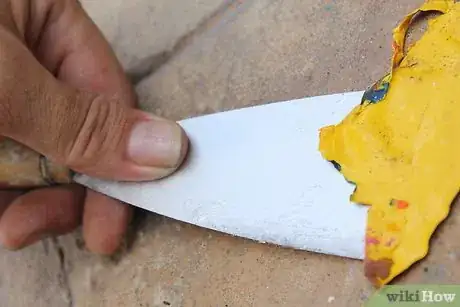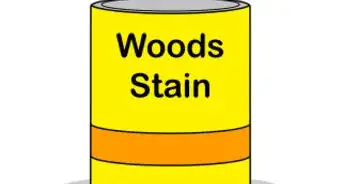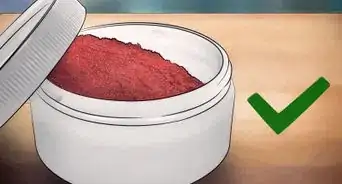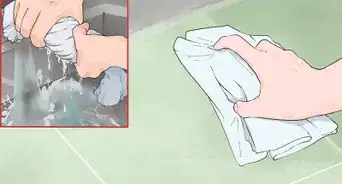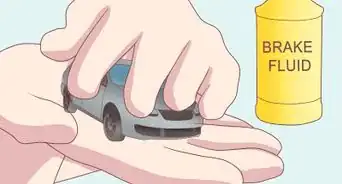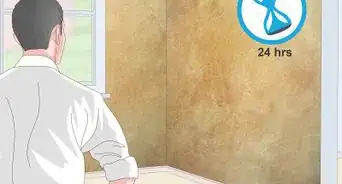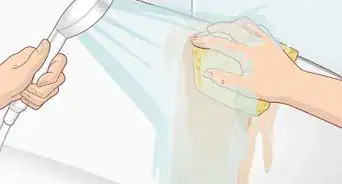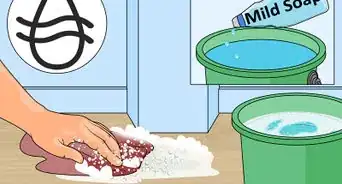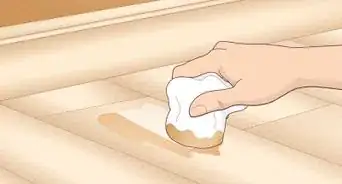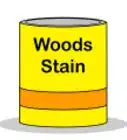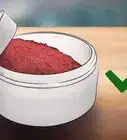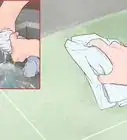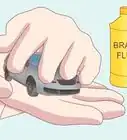This article was co-authored by Jeff Baldwin. Jeff Baldwin is a Residential Painter and the Owner of Baldwin Custom Painting. With two decades of painting experience, Jeff specializes in high-end residential and small commercial painting projects. Dedicated to quality craftsmanship, Jeff and Baldwin Custom Painting provide bonded/insured, licensed, and lead-safe certified services in residential painting, light commercial painting, and wood refinishing.
This article has been viewed 136,379 times.
If the paint job on your concrete porch screams "ugly," you can hide it, or you can remove it. Because removal is difficult and time consuming, hiding it with fresh paint or another coating more to your liking is an alternative really worth considering. If you're determined, however, to get down to bare concrete, you can do it mechanically or chemically. Keep reading for detailed instructions.
Steps
-
1First assess whether your under-surface is poured concrete, mortared concrete block, or block with some kind of coating over it such as stucco. Poured concrete can stand up relatively well to mechanical cleaning methods such as sand blasting, pressure washing, or scraping. The aesthetic of poured concrete may be the look you're after, so read on.
-
2If you've got a mortared block or block with a coated or stuccoed surface, mechanical paint removal methods could seriously damage your walls, so are not recommended.Advertisement
-
3Next, determine whether the paint is adhering well, or it is bubbling, peeling, or flaking. Paint showing poor adhesion can be scraped off by hand using a metal paint scraper and wire brush. Hand scraping and wire brushing is the safest way to go. If paint is loose, this method is easy but tedious. If you don't think you've got the patience, buy a dozen scrapers and wire brushes and invite a group of friends willing to pitch in for an all day porch scraping party. Have safety masks for everybody to avoid breathing any paint particles.
-
4If you don't have concerns about damaging your walls or concrete floor, old paint can be powered off with a pressure washer or sand blaster. If you don't already own a pressure washer or sand blaster, you can rent these from local tool rental stores or your nearest big box home supply store.[1] Start early and you should be able to complete a porch in one day. Carefully follow the directions that come with the power tool you've rented. Use eye protection and take care never to aim pressurized sand or water at your own feet, your pets, or anyone else. If you have neighbors located close to your porch, take into consideration that particles and overspray could drift their way.[2]
-
5Once you can see the underlying surface of your wall/floor, you can determine whether old paint failed due to some sealant or other priming issues on your concrete surface. More importantly, you can determine whether there has been water seepage or some other problem that damaged the old paint and should be corrected.
-
6If the area you're dealing with is not huge, and especially if the old paint is adhering well to the concrete, you may opt for chemical removal. Chemical cleaning may be your best option if the paint you're removing is not a full coat but only a paint spill or splatter spotting that hasn't come off when you scraped or wired brushed it.
-
7Chemical removal of paint from concrete or stone requires an acid. The most effective is formic acid. Formic acid has been distilled for centuries from the venom of stinging ants. Don't inhale the fumes. Prolonged exposure to the fumes can damage your optic nerves. Using formic acid in an open, ventilated area such as a porch should not cause any problems, as long as you protect yourself with rubber gloves, long sleeves and pants, eye protection against splashing, and a breathing mask.[3]
-
8Apply the acid directly from the bottle with a sponge or cloth. Allow it to remain on the paint long enough to dissolve the paint. How long can vary depending on how old and hard the paint is. When the paint is soft, you can pry it off with a hand scraper and wire brush, then rinse with fresh water. On a porch, you can accomplish this with your garden hose.
- After this, you will end up with a clean spot on the concrete, so it will be a noticeable spot until it gets dirty again.
-
9Whichever paint removal method you use, capture the scrapings or rinsed off paint residue for proper disposal.
-
10If you suspect that the paint residue contains lead, contact your local trash collection authorities before you start your project for information on proper handling and disposal.[4] If you suspect the paint contains lead, local laws may require you to hire a pro for this project, so check before you start.[5]
Community Q&A
-
QuestionHow do I clean a white watering hose?
 Community AnswerTo clean a white watering hose you will need a sponge, a bucket of water and soap.
Community AnswerTo clean a white watering hose you will need a sponge, a bucket of water and soap.
Warnings
- Formic acid in 85% concentration is not flammable. It decomposes to carbon monoxide and water. In the U.S. and Europe, a diluted form is actually used as a feed preservative.[6] As with all chemicals, read the label carefully and store any unused chemical strictly according to the label instructions. Formic acid at a concentration higher than 85% could become unstable over time if not properly stored.⧼thumbs_response⧽
- If you suspect that the paint residue contains lead, contact your local trash collection authorities before you start your project for information on proper handling and disposal. If you suspect the paint contains lead, local laws may require you to hire a pro for this project, so check before you start.⧼thumbs_response⧽
References
- ↑ https://www.youtube.com/watch?v=iPWr66TLUac
- ↑ https://www.concretenetwork.com/concrete/cleaning_concrete/equipment_options.htm
- ↑ https://www.bobvila.com/articles/how-to-remove-paint-from-concrete/
- ↑ https://www.webmd.com/women/lead-paint#2-5
- ↑ https://www.bobvila.com/articles/how-to-remove-lead-paint/
- ↑ http://acidpedia.org/formic_acid/
